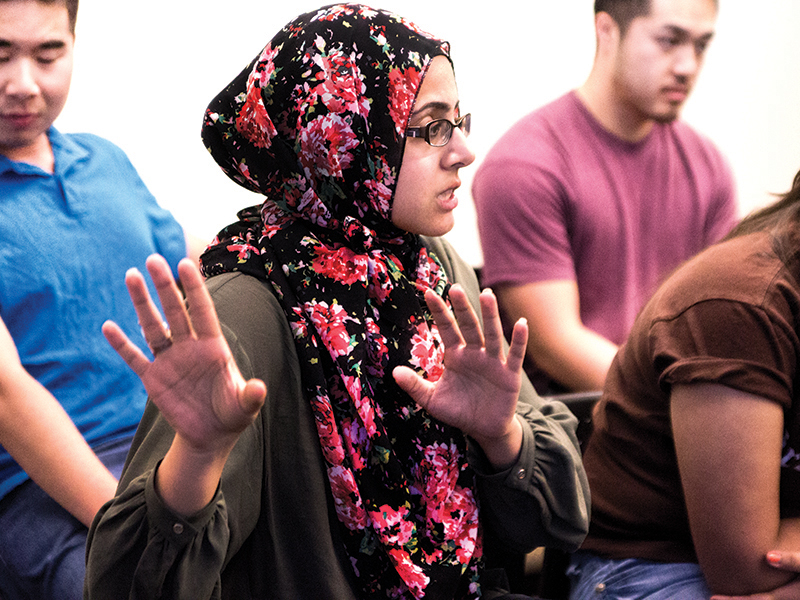
On April 15, UCR students met in HUB 379 for “The Importance of Unity,” a debate on affirmative action in the UC system. Students discussed state constitutional amendment 5 (SCA 5), an amendment to California’s constitution which would allow public institutions of higher education to take race and ethnicity into consideration when accepting students. The debate was introduced by political science professor Dr. Karthick Ramakrishnan and organized by ASUCR senators such as Abraham Galvan.
California state Sen. Edward Hernandez proposed SCA 5 in 2012 with the aim of overturning Proposition 209 and legalizing affirmative action in public universities. Instituted in 1996, Proposition 209 bans public institutions from considering race, sex or ethnicity as factors in admission or employment. This proposal has incited controversy which has continuously postponed its placement on the ballot.
Under the guidance of ASUCR senators, audience members tackled the misconceptions around SCA 5 in a debate. Hernandez says he is not establishing a quota system or preferential treatment. “SCA 5 simply allows our public colleges to identify achievement gaps, such as a lack of women in the (science, technology, engineering and math) fields or even a lack of men, especially men of color, in teacher-credentialing programs,” he said in a press release. This has had a controversial effect on Asian-American communities, who feel that affirmative action may hurt students’ chances of entering these universities.
Members of Congress, such as Judy Chu, spoke out against the amendment after facing pressure from their Asian-American constituents. Petitions from these communities sprang up even before it reached the ballot.
“My mom has sent me many newsletters telling me to oppose SCA 5 … she thinks it would lower the amount of Asian-Americans students admitted into UCs,” said Johnson Pham, a first-year linguistics major. “I’m really disappointed that so many people in the Asian-American community have taken this stance because SCA 5 would help underserved members of the community like Laotians.”
The debate focused on the difference between affirmative action and implementing a racial quota system, wherein applicants can be turned down because the university has already met its “limit” for a certain race. Debate participants noted that quota systems were constitutionally outlawed in 1978 with the famous case Regents of the University of California v. Bakke.
“Public education is here to serve the state of California (and) not even here to serve the students of California. It’s here to serve the future workforce,” said Ramakrishnan as a rebuttal to the argument that affirmative action prevents the best students from getting into their desired schools. The student audience members also addressed another alleged misconception: that people accepted under affirmative action would be unable to keep up with the rigorous college coursework.
“I applied to university in 1978 and came in through affirmative action,” said Emilio Virata, UCR’s interim assistant dean of student affairs. “When I look across at the folks who came up through the system with me, I don’t think that we were less capable. I think we just needed the opportunity to take advantage of the systems that we … wouldn’t have had access to.”
Affirmative action is a complex issue that should not be dismissed under misconceptions about racial quotas, concluded CHASS Senator Abraham Galvan, also an ASUCR vice president of external affairs candidate and one of the moderators for this event. He resolved to do more reading on the legislation and advised audience members to do the same.
The debate consisted of a wide selection of diverse racial groups. “I feel we’re really privileged to be here at UC Riverside. We have such a wide variety of ethnic groups,” said Pham.
Even without affirmative action, UC Riverside ranks 12th in the nation for diversity, according to U.S. News and World Report. Final deliberation for SCA 5 has been shunted into a committee, where committee members will decide the next step forward.








